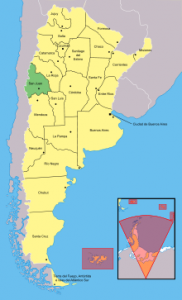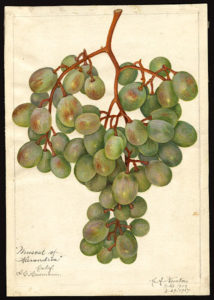The “Who’s Your Daddy” series takes a very brief look at the parentage of grapes, in order to get a better understanding of where particular varietals come from and how they are genetically related to one another. So far, we’ve covered: Cabernet Sauvignon, Carménère, Chardonnay, Gaglioppo di Cirò, Gamay, Kerner, Merlot, Müller-Thurgau, Muscat, Nebbiolo, Ortega, Petite Sirah, Petit Verdot, Pinotage, Pošip bijeli, Rotgipfler, Sangiovese, Syrah, Tempranillo, Torrentés riojano, and also the grapes from the USDA grape germplasm collection. Feel free to click on any one of the varietal names to read all about their parentage.
As you are probably well aware, there are only really a handful of grape varieties that make up the vast majority of wines that are sold in stores, whereas in reality, there are hundreds of different varieties that have been and currently are made into wines all over the globe.
As a reminder, diversity is important not only for a little variety in your life, but more importantly for the overall health and sustainability of the wine industry as a whole, particularly in this time of climate change. Here is just one example of that diversity:
Without further ado, the focus of this much overdue “Who’s Your Daddy?” post is the Cereza grape variety (Vitis vinifera). I’m embarrassed to say it’s been over a year since my last entry in this series, but then again, I’ve been kind of busy with a certain progeny of my own.
Brief History
Cereza, which translates to “cherry” in Spanish, is thought to have originated in Spain and brought to Argentina by Spanish settlers. Since that time, Cereza has enjoyed vast

Photo courtesy Andres Rojas (via wikimedia commons)
plantings in South America, with the majority of them occurring in Argentina (specifically San Juan province and Mendoza). Cereza plantings peaked in the 1980s, with reportedly upwards of 40,000 hectares, though since then has been on the decline.
Viticulture & Winemaking
After having spent hundreds of years adapting to Argentina, Cereza thrives in hot, dry climates. The berries themselves are large, thick-skinned, and have a pink hue, and are most often made into white wines (though occasionally they are used in rosés). Cereza is a late-ripening variety, and grows in very loose clusters.
The wines made from Cereza grapes are recommended to be consumed at a young age, likely due to the low polyphenolic content of the grapes/wine and its unsuitability for aging. In general, Cereza grapes tend to produce lower quality wines and are often used in blends to make jug wines.
Who’s Your Daddy?
In 2006, genetic analysis performed by French and Australian researchers (published in the journal TRENDS in Genetics) revealed that the genetic parents of Cereza are……

Photo courtesy U.S. Department of Agriculture (Public Domain)
Muscat of Alexandria…..
…..and…..

Photo courtesy Flickr user Agne27 via wikimedia commons
……Mission (sort of)!
Sort of???…..
In some of my preliminary research, I found that several sites were citing Muscat of Alexandria and Listán negro as the parents. What is the reason for this discrepancy?
Well, one year after the TRENDS research was published, a second group from Chile, Spain, and France published more a more detailed research on the Mission grape and found that Mission and Listán negro are a genetic match. So, genetically, the Mission grape and the Listán negro grape are the same, though there has been enough clonal variation from being separated by thousands of miles over a long period of time that they are still considered two separate varieties.
Additionally, Listán negro is also referred to as Pais (in Chile) and Criolla Chica (in Argentina). This just goes to show that there can be quite a bit of variation in nomenclature for grape varieties that are genetically identical.
There you have it! Now you know the genetic parentage of the Cereza grape, as well as a teeny bit of its history. I hope you enjoyed this little lesson and stay tuned for the next installment of the Who’s Your Daddy series whenever that may be!
Further Reading:
Peer-reviewed research:
Other sites of interest:
Grape Collective: Mission Grape, Listan Negro and the History They Share
Winegeeks: Cereza
Winemaking Talk: Cereza
Wine-searcher: Cereza Wine
World’s Best Wines: Cereza grapes
